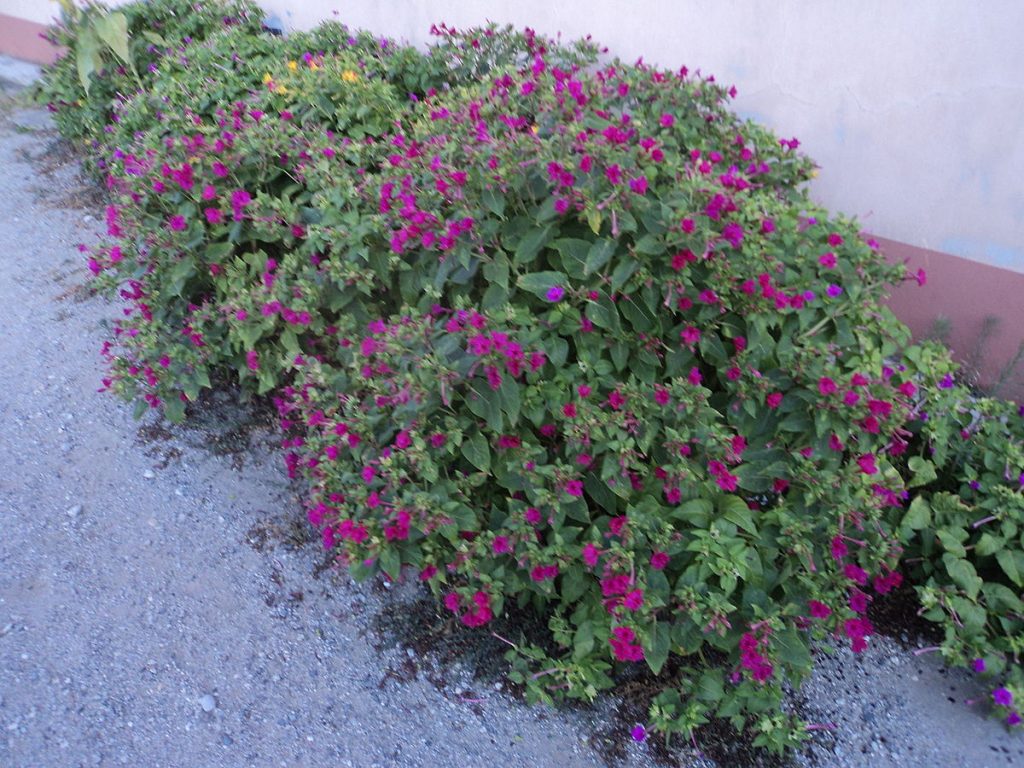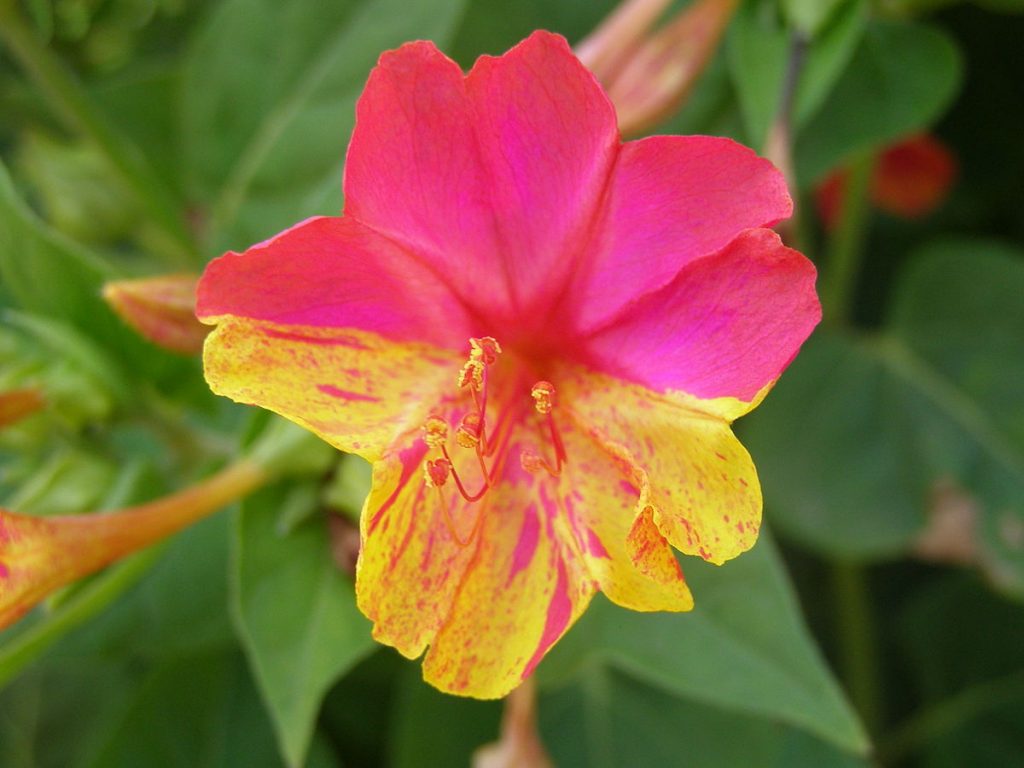
Native to the dry tropical regions of North, Central, and South America, this herbaceous perennial, also known as marvel of Peru and is a member of the plant family Nyctaginaceae that also includes Bougainvillea and Abronia. It has been used to treat a variety of ailments including headaches, earache, diarrhea, constipation, dysentery, syphilis, liver infections, inflammation and scorpion stings. In addition the flowers have been used for food coloring and dye, and the plants are also grown as ornamentals in the garden. Photo Credit Photo Credit Nicholas Gemini Wikimedia Commons

Description: The shrub-like plant grows from a large swollen tuber that is up to 12″ long and may weight 40 pounds. It is spreading, multibranched and has week, brittle stems that are light or bright green sometimes with a yellow or pink hue. The dark green leaves are lanceolate to ovate, up to 6″ long, and have pointed tips and heart-shaped bases. In summer, terminal or axillary clusters of funnel-shaped, tubular flowers appear. They are 2″ long by 1″ across, have 5 flaring lobes, and may be white, pink, red, magenta, yellow or a combination of colors, sometimes with mottling and striping. Flower of different colors may appear on the same plant. The flowers open about 4 o’clock, hence the common name, remain open all night, and are attractive to hummingbirds and butterflies. The fruit is a leathery, 5-ribbed achene, and plants readily reseed themselves.
Poisonous Properties: The roots and seeds are considered poisonous but the severity of the poisoning is low. Contact with the root may cause minor skin irritation lasting a few minutes. Children who have ingested the seeds or root have experienced stomach pain, nausea, vomiting, and diarrhea. Four o’clock contains many compounds that are beneficial to health but the agent responsible for its toxicity is unknown. Photo Credit: Steve Sanders Wikimedia Commons